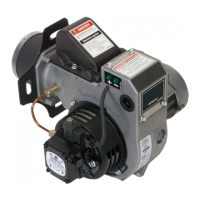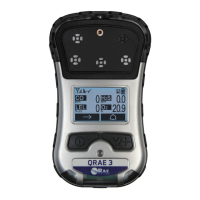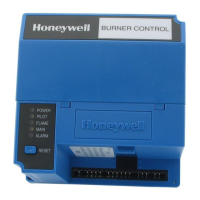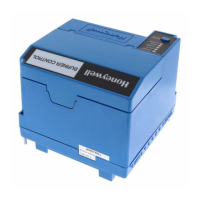20
Honeywell Titan SCBA, 20132
B. Filling Procedures
1. Air Purity
Unless safety and health codes in your area specify
otherwise, air cylinders should be re lled with com-
pressed air meeting the purity requirements for
Type 1, Grade D Gaseous Air as speci ed by the
Compressed Gas Association Commodity Speci ca-
tion for Air, publication G-7.1. The moisture content,
expressed as dewpoint, shall be maintained at -65°F
(-53.9°C) or lower, or less than 24.0 ppm by volume
moisture content.
UNDER NO CIRCUMSTANCES SHALL AN AIR
CYLINDER BE FILLED OR PARTIALLY FILLED
WITH OXYGEN.
NOTE
When the SCBA is being used for re ghting, it
is recommended that the cylinder be lled with
air meeting the requirements of NFPA 1989.
2. Maximum Fill Pressure
Composite and aluminum cylinders may be lled only
to the service pressure indicated on the cylinder label.
Composite and aluminum cylinders must never be
lled to a pressure greater than the marked service
pressure.
3. Filling Procedure
a. The ll station must be constructed and equipped
in accordance with applicable state safety codes.
b. The cylinder may be partially immersed (DO NOT
submerge the cylinder valve) in a water bath to mini-
mize the temperature rise that occurs as the cylin-
der is lled. The ll hose should be equipped with a
restraining cable to prevent uncontrolled “whipping” in
case of hose failure.
c. After connecting the ll hose, open the cylinder
valve fully. A separate metering valve must be used
to control the ll rate. Fill the cylinder slowly, at a rate
not exceeding 500 psig per minute. (Use caution if
faster recharging rates are used.) After the initial ll-
ing, allow the cylinder to cool to room temperature,
then “top off” the cylinder to achieve full service pres-
sure.
d. Use particular care to ensure that an air cylinder is
never connected to a source capable of supplying air
at a pressure greater than the maximum service pres-
sure of that cylinder.
e. Close the cylinder valve when the cylinder is full.
f. Slowly bleed pressure from the lling lines.
g. Disconnect the lling lines.
4. Storage
Air cylinders should be recharged as soon as is practi-
cal after use. Cylinders should not be stored partially
charged, for two reasons:
a. If used without recharge, the service duration of
the apparatus is reduced.
b. The safety relief device is designed speci cally to
protect a fully charged cylinder from the effects of a
re or from mechanical shock. For maximum safety,
the cylinders should be stored fully charged. If the
cylinder is stored empty and the valve is inadvertently
left open, humid atmospheric air may enter the cylin-
der and result in interior corrosion. If a self-contained
breathing apparatus is to be maintained in “standby”
mode, i.e., available for immediate emergency us-
age, the cylinder pressure gauge should be checked
at least once a month to assure that the cylinder is
charged to full service pressure. Place the cylinder in
a suitable safety sleeve or lling area.
VIII. MAINTENANCE
NOTE
Inspect the SCBA for defects before and after
each use, and at least once monthly if not used.
Repair as necessary, clean and disinfect after
each use, and store properly to ensure that
the SCBA is maintained in satisfactory working
condition. Keep records of inspection and repair
dates and results. Refer to the inspection table
in the back of this manual.
A. Facepiece Cleaning
WARNING
• It is the user’s responsibility to ensure
that the cleaning process chosen provides
adequate disinfection or decontamination.
• Specialized processes are required to
disinfect and decontaminate a respirator.
You MUST follow the instructions of the
manufacturer who supplies the disinfecting
or decontamination equipment or chemicals.
• In the absence of a commercial sanitizing
product, the hypochlorite solution described
in the steps below will eliminate many, but
not all, biohazards.
• Failure to comply with this warning may
lead to personal injury, illness, or death.
CAUTION
• DO NOT clean the facepiece with the
regulator, RCS, or VAS attached.
• You must ensure that this respirator is not
damaged by disinfecting or decontamination
equipment or chemicals.
• The facepiece lens can be scratched
through careless or abusive handling. DO
NOT use abrasive cleaners or pads. DO NOT
towel dry.
• Cleaning or bleaching solutions containing
chlorine will damage the headnet and the
backpack harness fabric.
NOTE
• Silicone and rubber parts of the facepiece may
be cleaned between washing with Honeywell
Mask Wipes, P/N B140096.
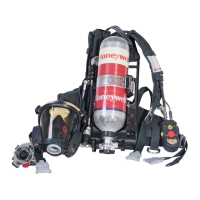
